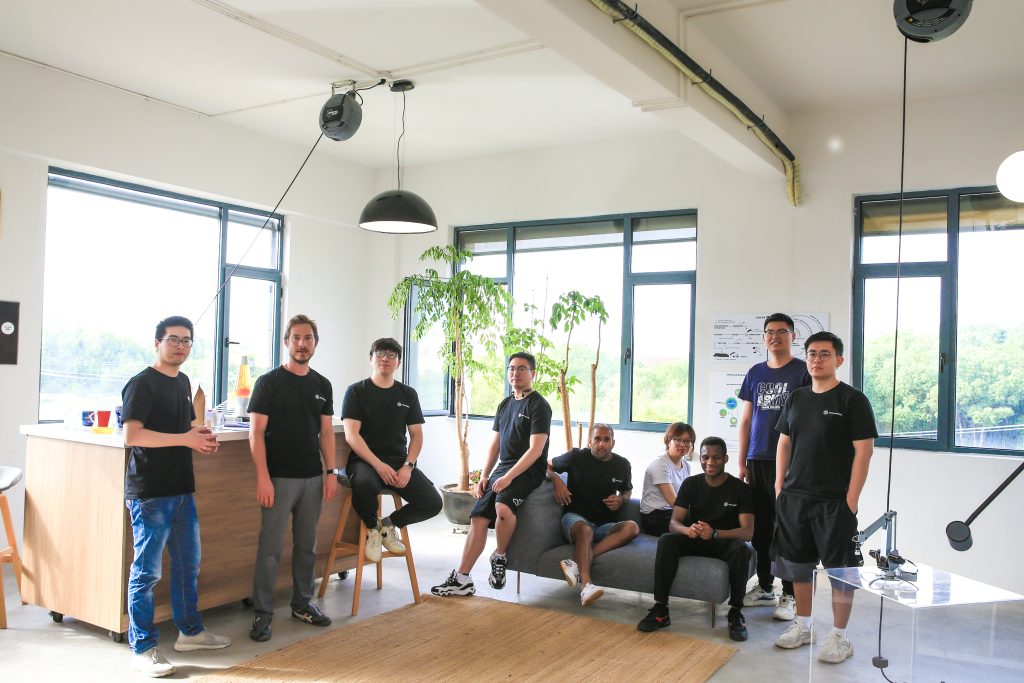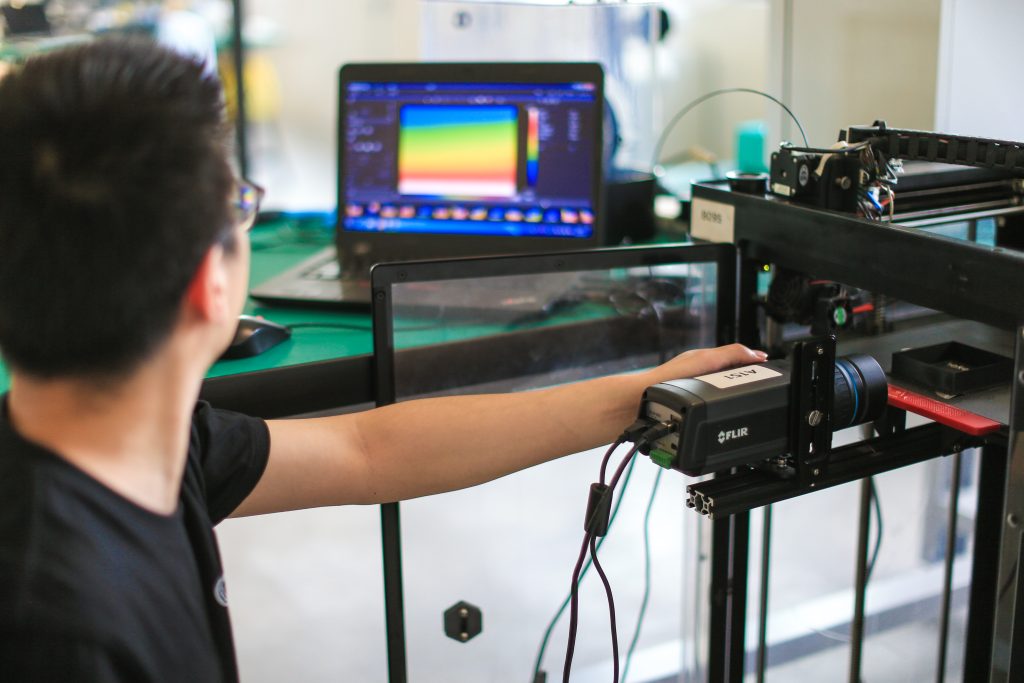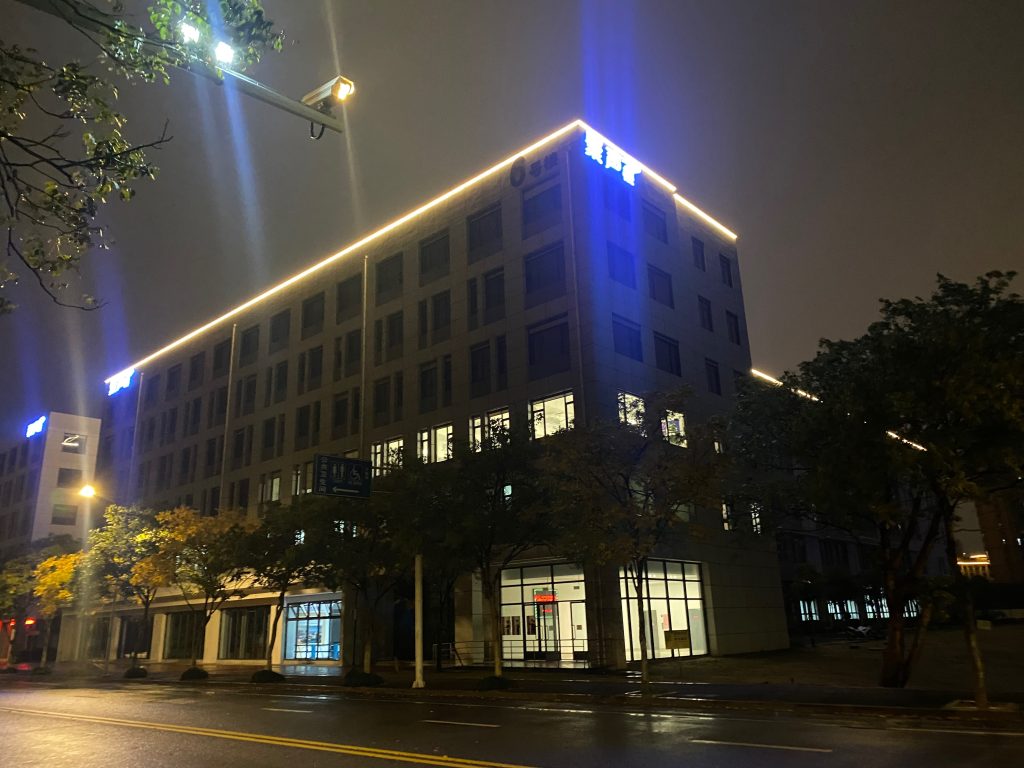Ahead of Formnext 2023, 3D Printing Industry spoke to the winners of this year’s Formnext Start-Up challenge.
David Hartmann, CEO and Founder of Helio Additive Inc., shed light on his professional journey and the origins of his venture to make digital manufacturing scalable.
A German-born New Zealander, Hartmann has worked in Germany, Shanghai, Hong Kong, India, and the corporate rigors of Bayer’s global headquarters in Germany. His association with the chemical giant Bayer spanned various roles, from strategy, mergers, and acquisitions to becoming the Senior Vice President for growth ventures. These roles dealt with businesses undergoing transformative changes regarding material requirements and manufacturing setups.
An important moment occurred during a conversation with Dr. Xiaofan Luo, CEO of Polymaker, a top-tier 3D printing materials manufacturer. During a meeting in 2019, they delved deep into the challenges plaguing digital manufacturing. “Ten years ago, we thought, if we build better printers, we can deal with these reliability and scaling issues. But the only way we can solve the challenge is by deeply understanding the physics behind what’s going on and then solving it in software.”
Taking this challenge head-on, Hartmann left Bayer (by then renamed Covestro) and began creating Helio Additive in 2020. Despite the turbulent landscape shaped by COVID, Helio was founded close to Polymaker’s R&D facility in China, which Hartmann recognized as a strategic advantage. Emphasizing the startup’s distinction, Hartmann elucidated how tackling the deep tech problems in polymer digital manufacturing deviates from the conventional MVP-led startup journey. Their mission was rooted in acknowledging a profound industry problem and finding a way to address it.
“It’s not just material science. It’s not computer science. It’s not mechanical or electrical engineering; you’re working with a whole mass of complex problems,” says Hartmann.
Voting has now started for the 3D Printing Industry Awards 2023. Cast your vote now!

Helio Additive solutions for scalability and repeatability in Digital Manufacturing
At the heart of these challenges, according to Hartmann, lies the behavior of polymers in varying thermal environments. He posits that understanding the thermal physics of polymers and how they’re deposited is vital to minimizing defects in finished parts. “We learned early on that you needed to understand how the polymers reacted, how the layers bond, how can you ensure there’s no stress buildup in the part.”
Helio Additive embarked on creating a proprietary process simulation tool. Unlike existing options, this tool was tailored to offer fast and efficient thermal analysis across any geometry, printer, or polymer. “Towards the end of 2021, beginning of 2022, we started to see a technical path that was truly scalable. We’re fully cloud-native, which for simulation is significant,” Hartmann explained.
But generating vast amounts of thermal data was only one part of the equation. Hartmann likens the raw data to “a book in a language you’ve never seen.” The challenge then became about translation. That’s where Helio Additive’s polymer physics team stepped in, building models to decipher layer bonding, stress relaxation, crystallization, and other critical factors.
Combining these models with the thermal data has been the company’s unique selling point. By predicting thermal history and interpreting it in actionable ways, Helio Additive aims to optimize digital manufacturing processes, reducing waste and boosting print speeds.
However, Hartmann sees the company’s role not just as a solution provider but also as an enabler. “We want to make our API open to partners and let them build on top of what we do. Other people will be able to do way more powerful stuff than we can even imagine,” he said.

Digital Manufacturing’s “Hidden Parameters” decoded by Helio Additive
In the digital manufacturing landscape, while a plethora of data exists, the challenge lies in distilling its essence. This is a shift from traditional processes. With digital, data can be overwhelming.
Hartmann clarifies that these “real parameters” are the intricate, often unseen, decisions made during the process. “As an engineer, you control speed, temperature, infill, for example. You control some high-level parameters and let the engine do the rest for you.” However, the visible manifestations of these parameters are the challenges in the output – be it deformation, cracking, or other defects.
Hartmann underscores the crucial aspect of understanding polymers’ behavior, “Polymers flow. And they flow differently at different temperatures.” He identifies two primary culprits for most output issues: layer bonding and stress relaxation. To mitigate these challenges, it’s imperative to regulate certain hidden process parameters. “You’re not controlling to stop warping; you’re controlling to stop stress building up… you’re controlling to stop overheating or overcooling.”
Advanced simulation tools are required, “We can’t do that in our heads. We need simulation, and we need it at a voxel level.” Helio Additive’s approach, therefore, is to demystify these hidden parameters, ensuring optimal results in digital manufacturing.
Software for large-scale Additive Manufacturing
Hartmann explains, “Dragon is a cloud-based software engine. It provides, through an API or a dashboard, access to the core toolset, which is a thermal simulation, for any geometry, any printer, and any material.”
The application of Dragon has seen remarkable results in large-scale granular-based additive manufacturing. It has enabled users to “digitally experiment with parameter sets,” dramatically reducing waste and increasing efficiency. In one case study, Hartmann cited, they managed to “save well over 300 kilos of material and four engineering weeks of labor.” This impressive achievement equated to “a 70% reduction in the scrap” for a single part.
Helio Additive’s first product is a process dashboard specifically for large-scale granular-based additive manufacturing. Dragon for LSGAM simulates the thermal history of a print and will flag areas of concern resulting in first-time-right 3D printing, an increase in asset utilization, and lower scrap rates.
Hartmann further touched on the emerging trend of microfactories, emphasizing that merely purchasing a printer doesn’t guarantee quality parts. Companies increasingly build digital manufacturing setups, incorporating various stages from material sourcing to post-processing. With Dragon, they can achieve improved transparency and optimization of their processes. Hartmann says, “We can act as an auditing quality step. We know on a voxel-by-voxel basis how this part was manufactured.”
Addressing the challenges currently stymying the industry’s potential, Hartmann emphasized the critical role of his firm in expediting new material introduction in additive manufacturing.
Projecting into the market potential, the Ark Invest yearly report on new technologies was highlighted, anticipating a surge in the digital manufacturing space. While prototyping has saturated the market, there’s a shift towards material extrusion-based 3D printing, expected to catapult the industry towards a valuation of “$130 billion by 2030.” Hartmann, however, raised concerns about the limited material types available in additive manufacturing compared to conventional methods, suggesting the need for further variety and specificity.
Regarding the focus on the end goal of any process, the CEO said, “It’s not about 3D printing, injection molding, or thermoforming. It’s about manufacturing a part.” Hartmann emphasized the potential efficiency improvements Helio Additive could bring, stating, “It used to take five engineers 18 months to bring a new material to additive manufacturing. And we can slash that massively by moving all those experiments into the cloud.”

Helio Additive on 3D Printing certification enhancement
Helio Additive is also positioning itself at the forefront of improving the qualification and certification processes in the additive manufacturing industry.
Drawing parallels with the Underwriters Laboratories (UL) flame retardant certification system, Hartmann explained, “You get a yellow card, and your material goes through very standard fire safety testing.” However, he stressed that the same system needs to be improved when applied to 3D printing, noting, “You standardize on geometry. If you can’t understand what’s happened in the printing process, you can’t understand how your part is going to behave in the real world.”
In this light, Helio Additive’s solution aims to standardize understanding of the printing process, ensuring consistent layer bonding akin to bulk material properties. Achieving this uniformity can pave the way for real-world certification, mitigating challenges like unpredictable gas permeability.
Given the steep expenses and time requirements tied to industrializing 3D printing, there is tangible value in Helio Additive’s proposition. Hartmann underlined the importance of “certifying the equipment output and maintaining a consistent process.”
“We’re an enabler; we’re there behind the scenes to power these solutions,” reaffirming Helio Additive’s commitment to streamlining the additive manufacturing certification landscape.
Helio Additive at Formnext
Helio Additive anticipates increased exposure and strategic collaborations at Formnext. Hartmann emphasized the event’s significance, marking it as the first time their innovations will be showcased. “Formnext is the industry’s event of the year,” Hartmann remarked, shedding light on their inaugural exhibition. The company intends to highlight different case studies and augment awareness of its technological offerings.
“We’re looking for there is to build awareness for what we’re doing and get people coming in,” Hartmann said, highlighting the firm’s primary objectives. By engaging with potential partners and customers, Hartmann views the event as a critical stepping stone to a year of scaling. The ultimate goal is to drive leads and embark on projects where their technology can be further understood and utilized.
Visit Helio Additive during Formnext 2023; find them in Hall 12.0, B81L.
Featured image shows David Hartmann (CEO) & Dr. Priyesh Patel (CTO) of Helio Additive. Photo via Helio Additive.
Read more in our executive interview series with 3D printing leaders here.
What does the future of 3D printing for the next ten years hold?
What engineering challenges will need to be tackled in the additive manufacturing sector in the coming decade?
To stay up to date with the latest 3D printing news, don’t forget to subscribe to the 3D Printing Industry newsletter or follow us on Twitter, or like our page on Facebook.
While you’re here, why not subscribe to our Youtube channel? Featuring discussion, debriefs, video shorts, and webinar replays.
Are you looking for a job in the additive manufacturing industry? Visit 3D Printing Jobs for a selection of roles in the industry.



